What Is Plastering?
Important Point
Plastering is the practice of coating rough walls including irregular surfaces in the building or houses as well as other buildings with plastic material termed plaster. It also preserves the work of masonry.
To have a shiny, smooth, normal, clean as well as durable surface finish, and often even to enhance a presentation. To shield the soil from ambient effects by serving as a protective coating.
Cover up the workmanship that is faulty. In order to mask the faulty workmanship. To preserve the poor product including porous materials and joins developed in masonry work.
Therefore it provides a suitable foundation or floor for surface decoration by adding whitewashing, sweeping, painting, and distempering. Throughout the situation of internal plastering, the primary purpose is to shield the surfaces from dust as well as vermin contamination.
Mortar used during plastering can be a lime mortar, cement mortar, or lime mortar. Lime mortar provided should also have fat lime to a sand proportion of 1:3 either 1:4. When hydraulic lime is being used, the ratio of the mixture (lime: sand) is 1:2.
Cement mortar of 1: 4 either 1: 6 is quite widely included in plastering, the richer mixture being used for outside walls. To match the expense of lime mortar with the high consistency of cement mortar those using lime-cement mortar of 1: 1: 6 or 1: 1: 8 or 1: 2: 8.
The purpose of plastering is provided below:
- To hide faulty workmanship.
- To offer a smooth surface to prevent dust.
- To give a good glance.
- To Cover the wall from rainwater as well as other environmental entities.
- To shield the surfaces from the permit.
The Requirement of good plaster is provided here :
- It will stick comfortably to the context.
- It is meant to be hard and robust.
- It Prevents the moisture infiltration
- It is ought to be cheap.
The Lime mortar is typically used in Three layers, whereas the cement mortar is used in 2 to 3 layers for brick or stone masonry. The Cement mortar can be presented in two or several coats for concrete surfaces. Many times only one coat of cement mortar is added to concrete building blocks.
Its first coating offers the means to have a level floor. This final coating offers a shiny finish. When triple paints are being used, the second coat is classified as a floating coat. The total thickness of its first coating is between 10 and 15 mm.
The thickness of the middle coat is 6 to 8 mm. That final coating is only 2 to 3 mm deep. When a single coating is being used, the thickness of the coat shall be somewhere 6 and 12 mm. These coats shall be used against the asphalt surfaces that are never subjected to rain.
Also, Read: Types of Plaster Finishes (List of Plaster Finishing)
What Is Pointing?
Pointing is the practice of completing mortar joints in exposed brick or stone masonry via an appropriate cement either lime mortar. In order to better protect its joints again from the environment but also to enhance the appearance of the building structure.
It must be remembered that the mortar joints are all just vulnerable points in the system and thus should be properly prepared from its collapsing impact of rainwater. Sunrays as well as snowfall, which are inexpensive, can be taken in areas with low rainfall.
Rather than plastering the whole portion of the masonry, a specific mortar coating task is undertaken on the uncovered joints. It is named pointing. It comprises of raking the joints to either a thickness of 10 mm to 20 mm as well as loading them with the richest mortar mixtures. For terms of lime mortar pointing, the mixture utilized it is 1: 2 and that in the cases of cement mortar pointing mixture utilized it is 1 : 3.
Pointing is best suitable for stone masonry since stones have appealing colors as well as strong resistance to water penetration. Pointing brings excellence to the weakest component of masonry that joints and then contributes to the artistic perception of masonry.
Also, Read: 16 Definition Related for Plastering Work | Tools For Plastering | Preparation of Background for Plastering
Scope of Pointing:
- Pointing preserves the structure joints.
- It is inexpensive and better suited to low rainfall areas.
- The inherent elegance of the substance must be seen.
- It provides resistance to bricks and stones that are being used for building in climatic conditions.
Advantages of Pointing:
- It Increases the overall visibility of the structure.
- It eliminates the need for further maintenance or recovery work.
- It also prevents the walls of the building from adverse weather conditions.
- It also Enhances the structural integrity of the house.
Disadvantages of Pointing:
- The Moist brickwork freezes in winter and then decaying.
- It Breaking bricks or stones are the beginning to surface.
- Pointing is blamed for the awful damage to the walls.
Also, Read: What Is Pointing | 7 Types of Pointing | Keyed Pointing
Difference Between Plastering and Pointing:
|
Sr.No. |
Plastering |
Pointing |
|
1. |
It is extended to the whole surface. | It is mostly supported at open joints. |
|
2. |
Plaster should be added to all the surfaces of the brick. | Pointing could only be achieved on the first-class brick surface. |
|
3. |
It also covers up the faulty workmanship of the masonry building. | It is being used to reveal the elegance of very well masonry work. |
|
4. |
Many materials are required for this. | Only Limited material is required |
|
5. |
Plaster is placed both the inside as well as the outside | It should be Completed from the outside only. |
|
6. |
It helps to protect the entire surface from its environmental impact. | It preserves the brick mortar used for the bonding of bricks. |
|
7. |
Multiple coating can be used. | It Only adds a single coat. |
|
8. |
It offers a seamless as well as even normal surface. | Does not have an even, flat, or regular surface. |
|
9. |
The type of plaster used here is lime, mortar, mud plaster, waterproof plaster including plaster of paris. | The type of point used here is bent, either pointing, flush pointing, as well as V pointing. |
|
10. |
It demands a comparatively leaner mixture | Need a relatively richer mixture. |
|
11. |
It is expensive because more mortar is required. | The economic need as a mortar is smaller. |
|
12. |
In the case of interior quality brick masonry work, it is also important to mask the uneven distribution of surface patches respectively. | Used whenever artistic elegance is desired more often than not in the context of stonework. |
|
13. |
It offers a foundation or ground surface for whitewashing respectively. | That does not have a foundation or ground surface for whitewashing respectively. |
|
14. |
It has Long – lasting life cycle | It has less durable life cycle |
Definition of Plastering in Construction:
Plaster is a building material used for the protective or decorative coating of walls and ceilings and for moulding and casting decorative elements. In English “plaster” usually means a material used for the interiors of buildings, while “render” commonly refers to external applications.
What Is Plastering?
Plaster is a building material used for the protective or decorative coating of walls and ceilings and for moulding and casting decorative elements. In English “plaster” usually means a material used for the interiors of buildings, while “render” commonly refers to external applications.
Pointing in Civil Engineering:
The construction term pointing refers to the finishing of mortar joints in masonry, be it stone or brick. Repointing is the process of removing deteriorated mortar from the joints of a masonry wall and replacing it with new mortar.
Plastering and Pointing:
Instead of plastering the entire surface of the masonry, special mortar finishing work is done to the exposed joints. This is called pointing. It consists of raking the joints to a depth of 10 mm to 20 mm and filling it with richer mortar mixes.
Flush Pointing:
Flush pointing is when mortar is pressed hard in the raked joints, and finished off flush with the edge of masonry units. The edges are then neatly trimmed with a trowel and straight edge. Concave pointing is formed by making the mortar flush with the face brick then struck with a brick jointer.
Cement Pointing:
Pointing is the finishing of mortar joints in brick or stone masonry construction. Pointing is the implementing of joints to a depth of 10 mm to 20 mm and filling it with better quality mortar in desired shape. It is done for cement mortar and lime mortar joints.
Plastering Ratio:
| Mix Ratio of Mortar | General Usage Recommended |
|---|---|
| 1:4 | For External Plaster and for ceiling plaster |
| 1:5 | Brickwork Mortar and for Internal plaster (If sand is not fine Fineness Modulas > 3) |
| 1:6 | For Internal Plaster (if fine sand is available) |
Which Cement Is Good for Plastering?
Portland cement plaster is a versatile, durable facing material that can be applied to either exterior or interior surfaces of a structure.
What Is Pointing?
What is pointing and how does it work? Pointing is the term given to the ‘finish’ that is between the bricks or stone used to build your house. Depending on the age of the building, the mortar used to lay the stone or brick will either be made from lime, or more recently, cement.
What Is Brick Pointing?
The construction term pointing refers to the finishing of mortar joints in masonry whether it’s stone or brick. Since mortar often does not have as long a lifespan as the brick it holds together, it must be periodically removed and replaced.
What Is Repointing Brick?
Brick repointing consists in removing a portion of the deteriorated mortar and redoing the joints with new mortar. Repointing halts any further water infiltration through the mortar and behind the brick wall – which avoids any mortar crumbling or bulging brick and saves the wall (or any part of it) from collapsing.
Define Plastering and Pointing
Instead of plastering entire surface of the masonry, special mortar finishing work is done to the exposed joints. This is called pointing. It consists of raking the joints to a depth of 10 mm to 20 mm and filling it with richer mortar mixes.
Pointing in Plastering
Pointing is a process adopted to protect the joints in the masonry from atmospheric conditions. It also improves the asthetic view of the masonry walls.
Difference Between Plastering and Painting
Plastering involves applying a layer of plaster (a mixture of cement, sand, and water) onto a wall or ceiling surface to create a smooth and even finish. This process is typically done to cover up any imperfections or irregularities in the surface, to improve insulation or soundproofing, or simply to enhance the appearance of the wall. Once the plaster has been applied, it is left to dry and harden before it can be sanded down and painted.
Distinguish Between Plastering and Pointing
Pointing, on the other hand, is a process of filling the gaps or joints between the bricks or stones in a wall with mortar. This process is done to improve the strength, stability, and water resistance of the wall. Pointing can also improve the appearance of the wall, especially if the original mortar has started to crack or fall out. Pointing can be done both internally and externally, but it is mostly done externally, on the outer face of the wall.
Difference Between Bonding and Pointing
Bonding is the process of creating a strong and stable bond between two surfaces by applying a bonding agent, such as a mortar or adhesive. In masonry work, bonding is done by applying a thin layer of mortar between two layers of bricks or stones to create a strong bond between them. Pointing, on the other hand, is the process of filling the gaps or joints between the bricks or stones in a wall with mortar. This process is done to improve the overall appearance and weather resistance of the wall.
Bonding and Pointing
Bonding involves creating a strong and stable bond between two layers of bricks or stones by applying a layer of mortar or adhesive between them. This process ensures that the wall is strong and stable and can withstand external pressures and forces. Pointing, on the other hand, involves filling the gaps or joints between the bricks or stones with mortar. This process is done to improve the appearance of the wall, as well as to prevent moisture from penetrating into the gaps and causing damage to the structure.
Plastering Work Is More Expensive Than Pointing Work
It’s difficult to compare the costs of plastering and pointing work as it can vary depending on various factors such as the size of the area, the type of materials used, the complexity of the work, and the location. Generally speaking, plastering work can be more expensive than pointing work because it involves applying a layer of plaster to the surface of a wall or ceiling.
Difference Between Internal and External Plastering
Most of the interior surface plaster is made of a single coat of internal plaster. The thickness of the inner plaster varies from 6 mm to 12 mm. The outer surface plaster is made in two coat. External plaster thickness ranges from 18mm to 20mm.
Distinguish Between Mortar and Plaster
Mortars are used in masonry for joining stones, bricks, blocks etc. and plasters are used for rendering on the outside and inside of walls.
Objectives of Plastering and Pointing
a. To provide a smooth and finished surface. b. To protect the surfaces against atmospheric effects.
Like this post? Share it with your friends!
Suggested Read –
- What Is Defects in Painting | 18 Types of Defects in Painting | How to Prevent Defects in Painting
- Aggregates | Difference Between Coarse And Fine | How to do Shape and Size Matter in Aggregate
- What Is Transportation Engineering | Major Disciplines of Transportation Engineering | What Do Transportation Engineers Do
- What Is Sewerage System | Types of Sewerage System | Why We Need a Partially Separate System | How Does a Sewage Treatment Plant Work
- What Is Kelly Ball Test | Test Procedure of Kelly Ball Test | Use of the Kelly Ball | Advantages of Kelly Ball Test | Disadvantages of Kelly Ball Test
- What Is Oblique Drawing | Oblique Drawing Examples | What Is Oblique View | Oblique Projection | Oblique Shape | Cabinet Oblique | What Is Cavalier Drawing
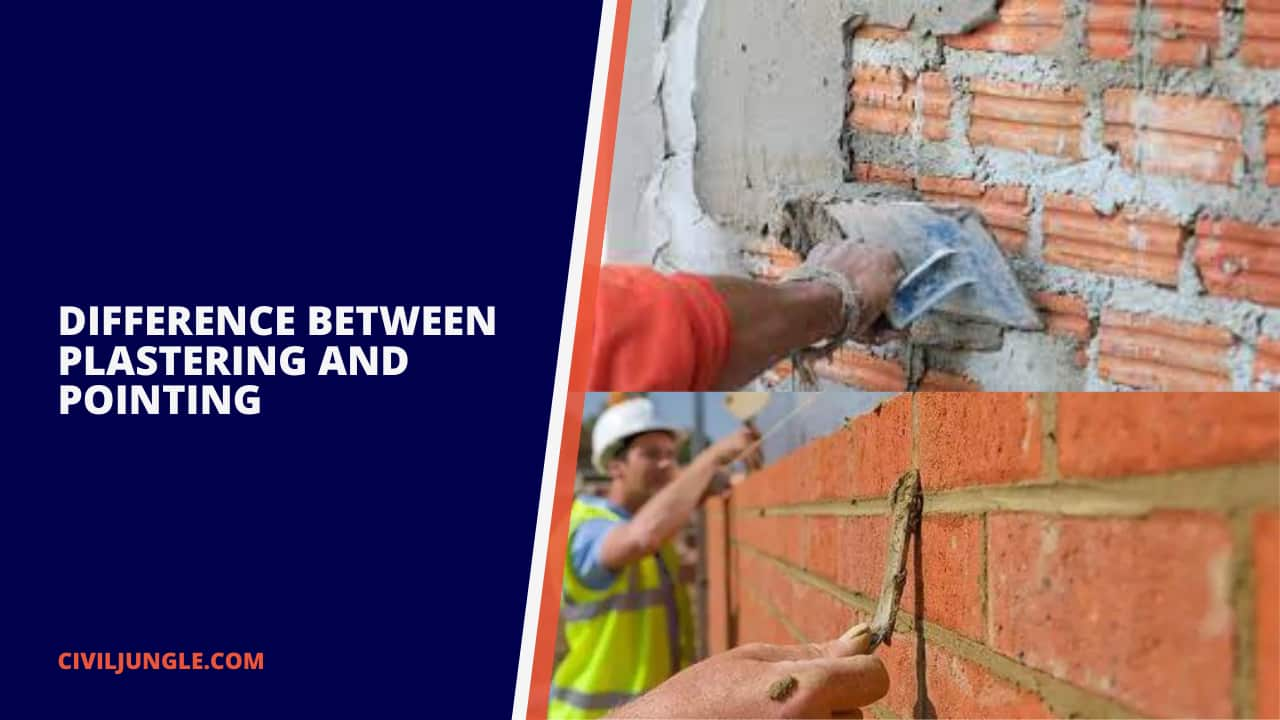
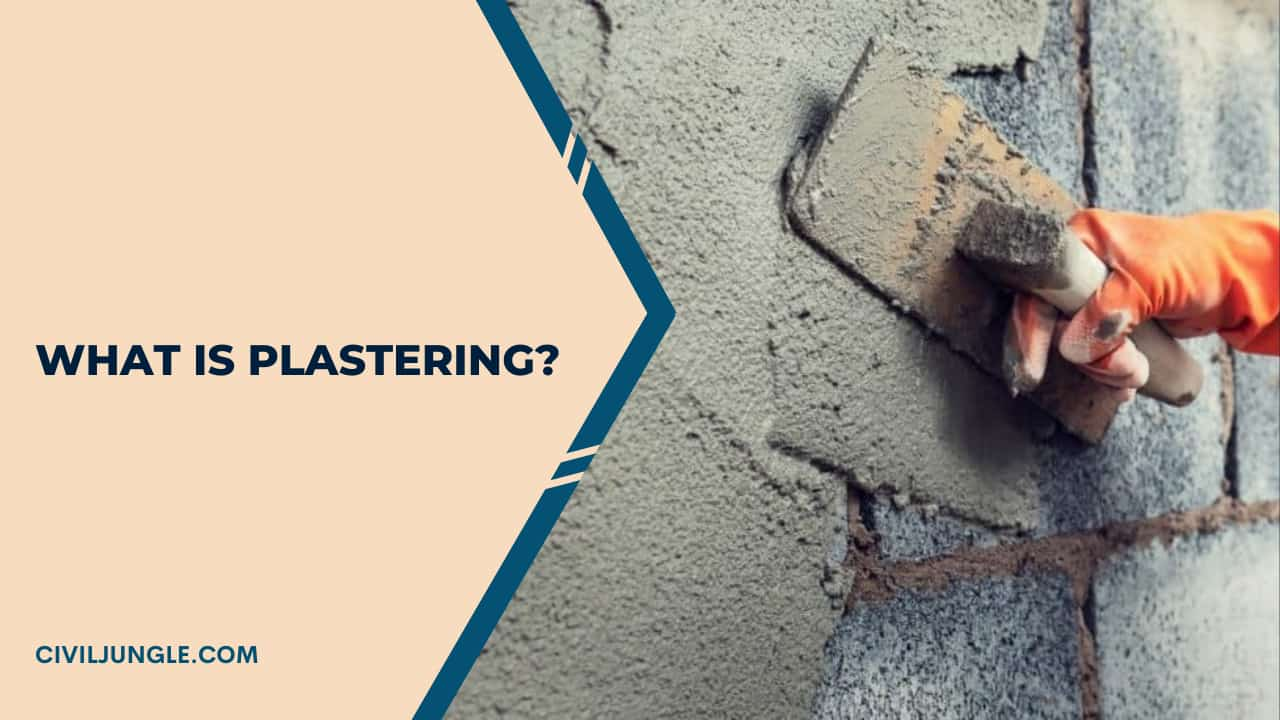
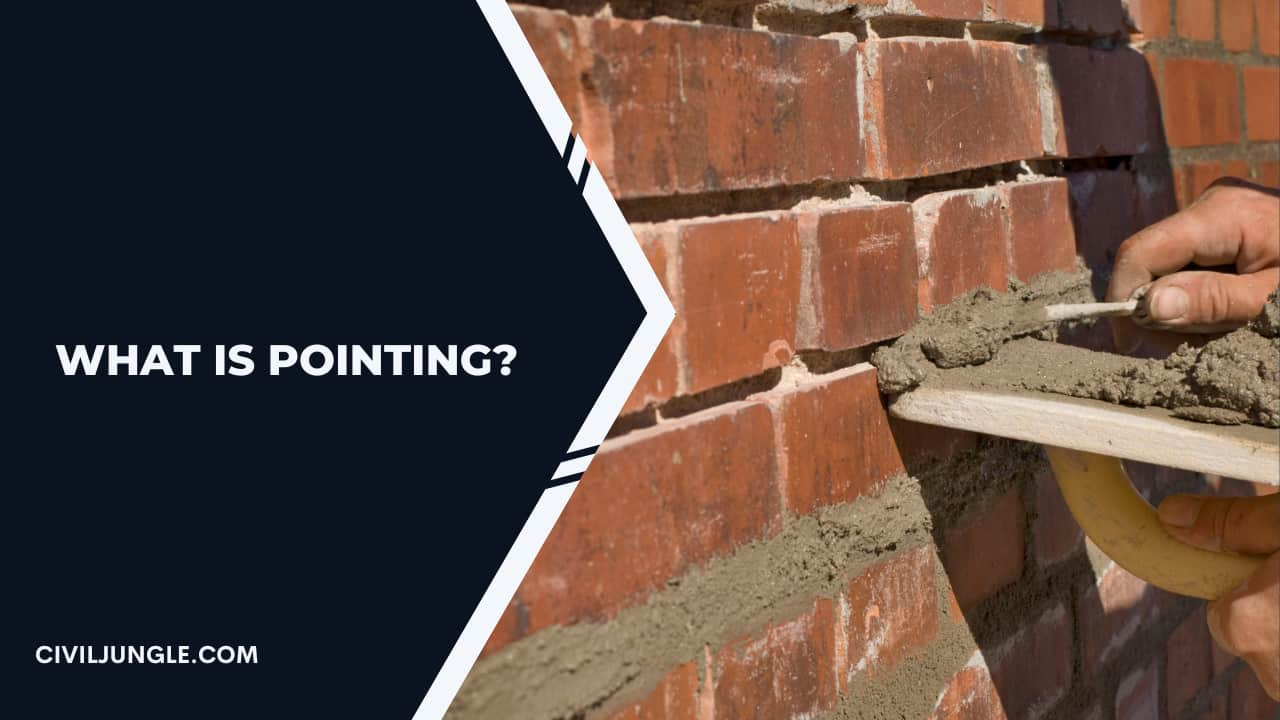
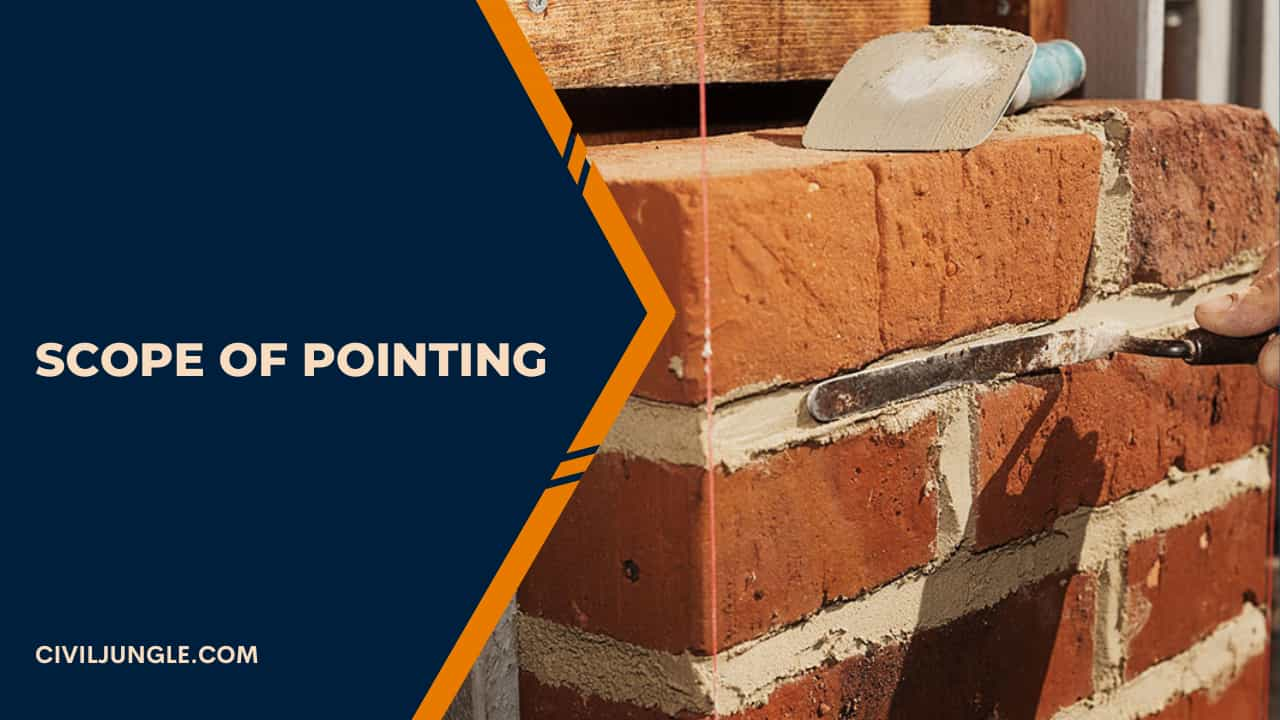
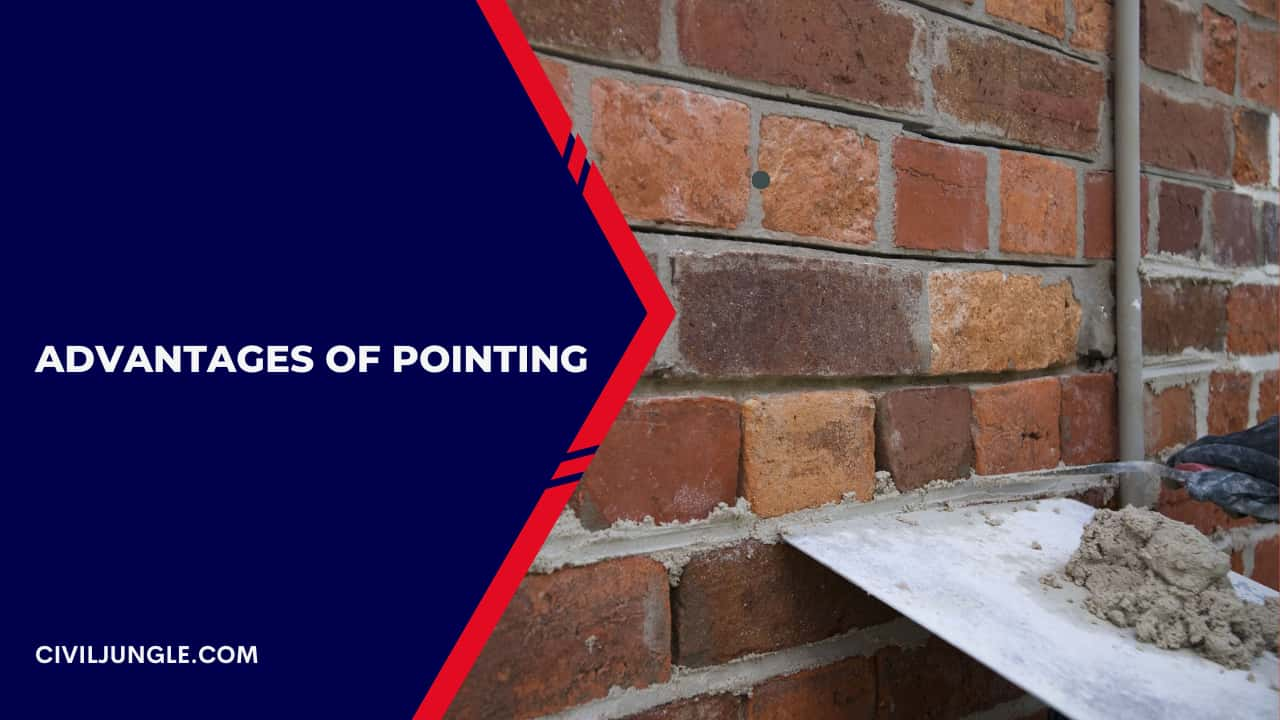
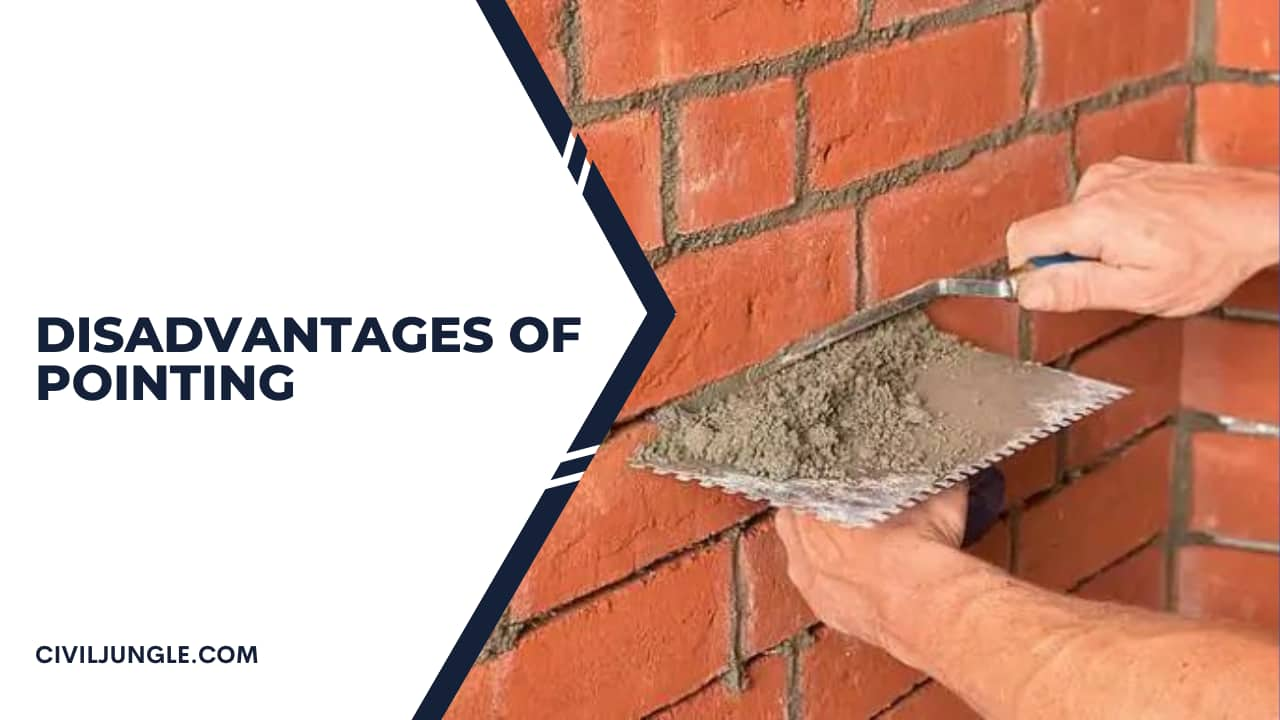
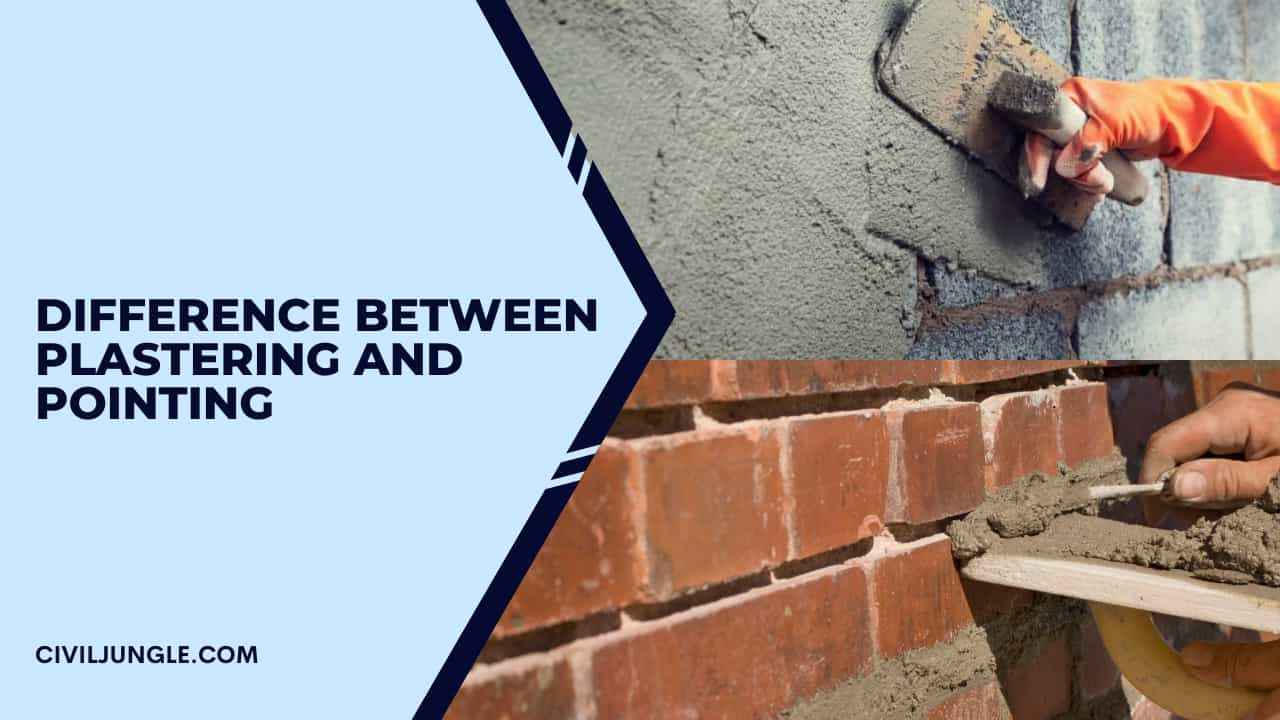

Leave a Reply